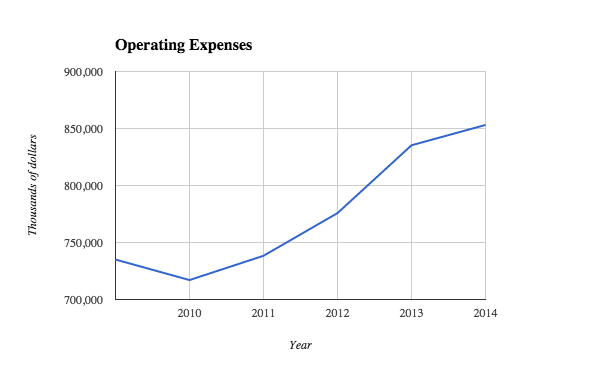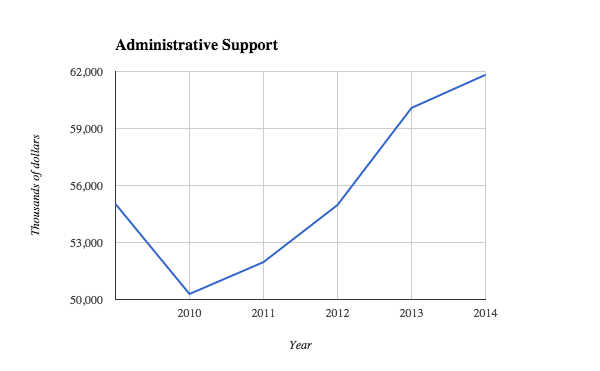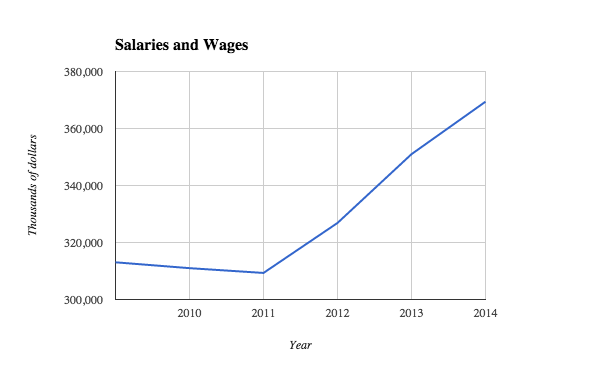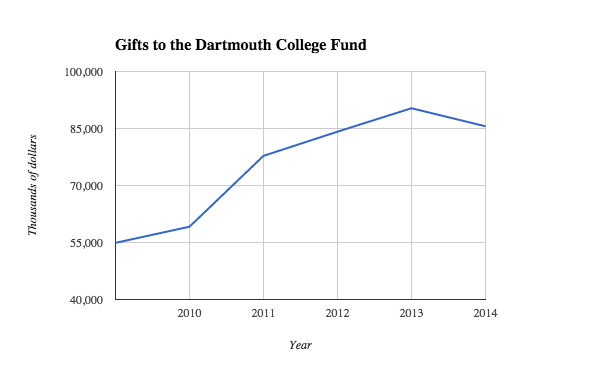On October 20, the College released its annual financial statement for Fiscal Year 2014 (June 30, 2013 to June 30, 2014) — a span of time roughly covering President Hanlon’s first year in office. The document includes a balance sheet (a “snapshot” of equity, assets and liabilities), a cash flow statement (how money was earned or spent), and a statement of activities (what that money was spent on). Analyzing the College’s financial health (comparing its assets against its liabilities) does not yield much — despite previous presidents’ best efforts, Rome was not burned in a day; its net worth is in the black with about six billion dollars. The items in the “Statement of Operating Expenses” portion do, however, shed light on where Parkhurst’s priorities may lie.
First, some basics. The College both earned and spent more than it did last year. The former is due, at least somewhat, to serendipity — a magnanimous anonymous donor bequeathed the College one hundred million dollars, and the endowment’s investment garnered an impressive nineteen percent return. The latter appears to be the result of inertia, as operating expenses have increased every year since 2010, although this year’s increase is a slower rate of growth, which will nonetheless lead to a tuition increase. This seemingly inexorable increase has been a concern for longtime observers of the College; Dartblog author Joe Asch has frequently noted that despite its smaller student population and cheaper location, Dartmouth spends more than Brown (this year, $853 million for 4,000 students versus $707 million for 6,000). One cause of this has been the compensation of non-faculty staff — Asch notes, “Remember that a junior professor in the Humanities costs only slightly more than twice the annual wage of a DDS cook helper; interestingly the cook helper is not required to have even a high school diploma to apply for the job, whereas the junior faculty member has at least nine years of post-high-school education at the country’s finest colleges and universities.” Spending on “Administrative Support” costs appear to have risen this year, along with “Salaries and Wages,” though the latter’s increase has, like overall spending, slowed. These data will have to be observed over time to see if the College will prioritize spending cuts to lower tuition costs.
One interesting piece of information is the rate of gifts to the Dartmouth College Fund (which does not include the aforementioned $100 million gift). After increases every year since 2009, the 2014 fiscal year saw a drop in donations (about ninety million in 2013 to eight-five million in 2014); this could be a matter of mere volatility or a potential harbinger of alumni dissension. Further trends will have to be observed.
We cannot draw the most robust of conclusions from one data point, but it appears that President Hanlon and his team will need to do some more work if they wish to bend the cost curve downwards.





Be the first to comment on "An Overview of the College’s Finances"